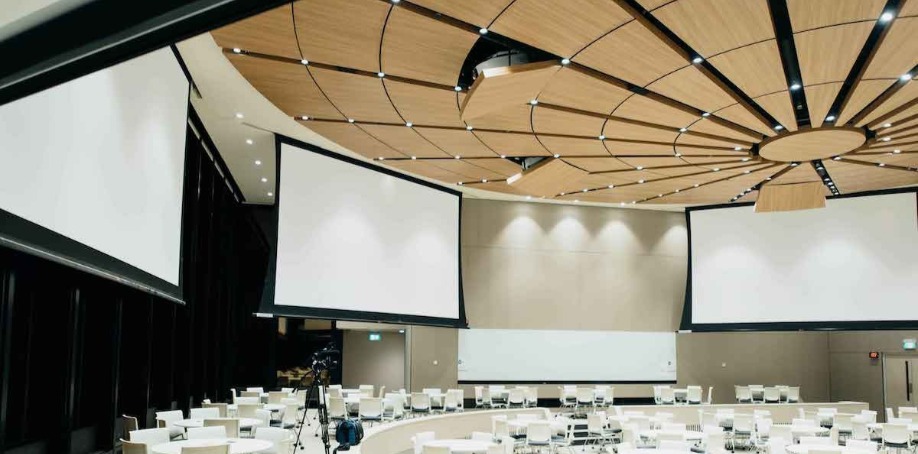
When AV integrators envision the build they would create, they do so with the latest technology choices, optimal efficiency, or seamless functionality in mind. All these factors matter. But they don't matter most.
Integrators who want to expand their business through referrals and return customers place one question above all: What is the best option for end users?
Here's why taking an end user's perspective matters to AV integrators — and how you can adopt this perspective to improve your bids and builds.
End Users Define Success Differently
As technology has become commonplace, end users' expectations for performance have increased. “Design is all about understanding the user and meeting their needs,” Michael Saadeh, product manager for user interfaces at HARMAN Pro Solutions, says. “User expectations have skyrocketed over the last decade.”
Consultant David Danto recommends AV integrators start the process by asking end users what their final goals for the project are. What does the resulting setup need to be able to do, and why? Lead user researcher at My Helix, Chuck Liu, agrees but recommends avoiding the question “What do you want?” Instead, he says to focus the discussion with questions like:
- What are you trying to get done?
- How are you currently doing it?
- What could be better about the way you currently do it?
Asking “why” as a follow-up to each question can help you get to the root cause, which can then suggest the optimal approach to an AV integration project from the end user's perspective. User experience designer and product consultant Sarah Doody provides a detailed list of questions, from customer introduction and topic specific to product opportunity and reaction.
Communicating with end users helps ensure that the final project balances end user functionality with integrator expertise. “I feel we technologists must finally accept that success is no longer about finding the best tool in the opinion of the technology professional,” Danto writes. “Rather, success is about the end users defining the best collaboration experience for them.”

Early Involvement Creates Buy-in
Danto also notes that when end users are consulted early in the process, that participation improves their overall opinion of and approach to the project. By participating, end users feel as if the resulting AV setup is “theirs” as well, making them more enthusiastic about learning how to use it.
A well-designed system with the end user in mind shortens the learning curve, too, notes Chris Reed, interaction design manager at HARMAN International. Reed credits the rise of smartphone and tablet use with the increased comfort end users feel with touchscreen AV control displays, for instance.
“If something feels intuitive, you feel confident you know what is going to happen when you press a button,” Reed told Commercial Integrator, “and even if you don't feel confident for some reason, you certainly don't feel intimidated by it, because it is technology that people live with all day every day.”
User Satisfaction Drives Referrals and Repeat Business
The intuitive vs. intimidating factor plays a key role in end user satisfaction with a completed AV installation and is also tied to their actual use of the system. Both satisfaction and use are directly correlated with referrals and repeat business for AV integrators.
And repeat business is crucial. In a Harvard Business Review article, Frederick F. Reichheld and Phil Schefterdescribed the results of their research on repeat business and profitability. They found that by increasing customer retention by just 5 percent, companies can increase their profits by 25 to 95 percent.

Why? Return customers don't just buy the second time around — they spend more, too. A Bain & Company study found a direct correlation between the number of times a client or customer had worked with a business and the total amount they were willing to spend on products and services.
Research indicates that these trends are true in industries that provide tech solutions, too, such as AV integration. While a repeat client may not be asking for another AV build, they're more likely to return for help with service, upgrades and other features.
They're also more likely to refer others to an integrator that impresses them. And word of mouth is powerful. In fact, an Ogilvy Cannes study [subscription required] found that 74 percent of those who receive a recommendation act on it — implying that referrals are an even more powerful way to connect with potential clients than repeat business, where only 60 percent are likely to close the deal.
Better User Experiences Benefit Integrators, Too
hen end users encounter an intuitive system designed for their actual needs, they're more likely to find it easy to use. That means they're less likely to need assistance from an integrator or from on-site IT staff.
Eric Dickmann at SunView Software recommends providing documentation for end users to consult when needed. A self-service portal with FAQs and other tools can forestall a phone call to the integrator. For some clients, setting up such a tool may be as simple as coordinating with the IT department to include AV-specific information in the organization's existing knowledge database.
For integrators particularly interested in the merging of AV and IT and its value to their clients, Bernd Harzog, the founder and CEO of OpsDataStore, recommends a number of software options for monitoring real-time use of components on a network, including AV components in an AV over IP build. These tools can help both integrators and IT staff spot and prevent problems and can fully incorporate AV systems into smart buildings that seek to improve energy efficiency.
Images by: chuttersnap, Markus Spiske, Rachel Lynette French


